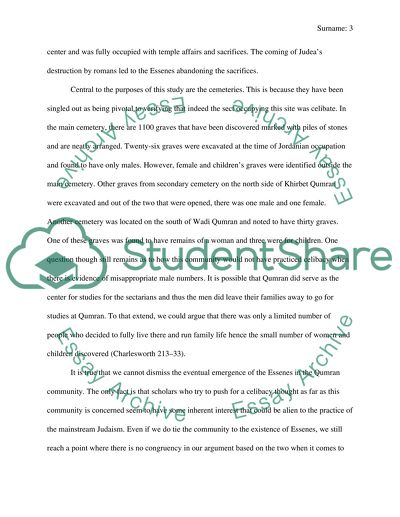Cite this document
(“Whether Qumran was a Male Only Celibate Community or Not Research Paper”, n.d.)
Whether Qumran was a Male Only Celibate Community or Not Research Paper. Retrieved from https://studentshare.org/religion-and-theology/1432933-was-qumran-a-male-only-celebate-community
Whether Qumran was a Male Only Celibate Community or Not Research Paper. Retrieved from https://studentshare.org/religion-and-theology/1432933-was-qumran-a-male-only-celebate-community
(Whether Qumran Was a Male Only Celibate Community or Not Research Paper)
Whether Qumran Was a Male Only Celibate Community or Not Research Paper. https://studentshare.org/religion-and-theology/1432933-was-qumran-a-male-only-celebate-community.
Whether Qumran Was a Male Only Celibate Community or Not Research Paper. https://studentshare.org/religion-and-theology/1432933-was-qumran-a-male-only-celebate-community.
“Whether Qumran Was a Male Only Celibate Community or Not Research Paper”, n.d. https://studentshare.org/religion-and-theology/1432933-was-qumran-a-male-only-celebate-community.


